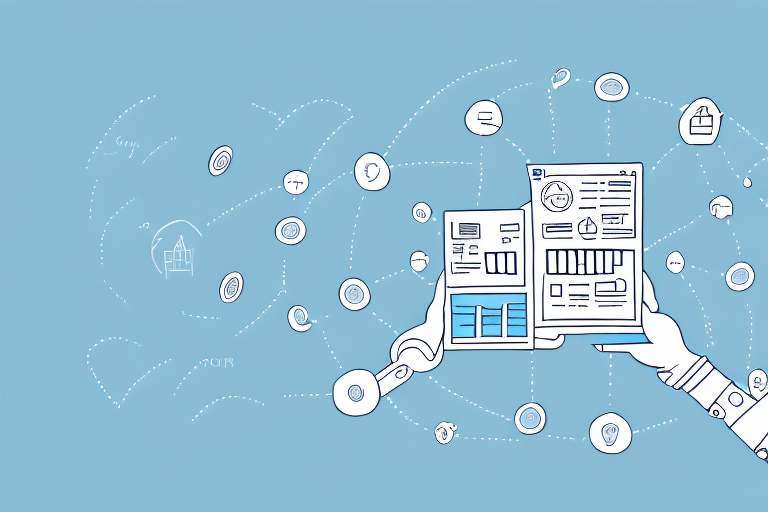UPS Releases List of Extended Area Surcharges for Remote Locations
UPS recently released its list of extended area surcharges for remote locations, causing concern among businesses and consumers. But what exactly are extended area surcharges, and why are they relevant? How do they affect shipping costs and what can you do to manage them? In this article, we’ll cover all of these questions and more.
What are Extended Area Surcharges and Why are They Relevant?
Extended area surcharges are additional fees imposed by shipping carriers like UPS for deliveries to areas that are considered remote or hard-to-reach. These charges are meant to cover the added costs of delivering to these locations, which typically require more time, resources, and transportation expenses than normal.
These surcharges are relevant for businesses and consumers because they can significantly increase the cost of shipping. For businesses that rely on shipping for their operations, extended area surcharges can eat into their profit margins and make it challenging to remain competitive in certain markets. For consumers, these surcharges can add up quickly, especially for those living in remote areas.
It’s important to note that extended area surcharges can vary depending on the carrier and the location. Some carriers may have different definitions of what constitutes a remote or hard-to-reach area, and the fees may also differ based on the distance from the nearest shipping hub. Additionally, some carriers may offer discounts or waivers for certain types of shipments or for customers with high shipping volumes.
What are Remote Locations and How Do They Affect Shipping Costs?
Remote locations are typically defined as areas that are far from major urban centers, difficult to access, or have limited transportation infrastructure. Examples include rural areas, islands, national parks, military bases, and other locations that are not easily reached by standard shipping routes.
These remote locations can significantly affect shipping costs because they are often more expensive to reach and require specialized equipment or transportation methods. This can drive up the cost of shipping for both businesses and consumers, which is why extended area surcharges are often imposed to cover these additional costs.
One of the biggest challenges with shipping to remote locations is the lack of infrastructure and resources available. This can make it difficult for carriers to deliver packages on time and in good condition. In some cases, packages may need to be transported by boat or plane, which can add significant time and expense to the shipping process.
Another factor that can impact shipping costs to remote locations is the availability of customs and import/export regulations. Some countries or regions may have strict regulations on what can be shipped in or out, which can further complicate the shipping process and increase costs.
Understanding the Impact of UPS’ Extended Area Surcharges on Your Business
If your business relies on shipping, it’s important to understand the impact of UPS’ extended area surcharges on your operations. Depending on your shipping volume and the frequency of deliveries to remote areas, these surcharges can add up quickly and significantly affect your bottom line.
However, it’s worth noting that UPS’ extended area surcharges are not unique to the company and are a common practice among shipping carriers. In fact, other carriers like FedEx and DHL also impose similar surcharges for deliveries to remote areas.
One way to mitigate the impact of these surcharges is to negotiate with your shipping carrier for lower rates. If you have a high shipping volume or a long-standing relationship with the carrier, they may be willing to offer you a discount or waive the surcharges altogether.
Another option is to consider alternative shipping methods, such as using a regional carrier or consolidating your shipments to reduce the number of deliveries to remote areas. By exploring different options and being proactive in managing your shipping costs, you can minimize the impact of extended area surcharges on your business.
How to Determine if Your Location is Considered Remote by UPS
If you’re unsure whether your location is considered remote by UPS, you can use the company’s online tool to check. Simply enter your postal code or city and state, and UPS will provide a list of extended area surcharges that apply to your location.
It’s important to note that these surcharges can vary depending on the type of service and package you’re shipping. For example, UPS may have different surcharges for ground shipping versus air shipping, or for large packages versus small ones. Make sure to carefully review the surcharge list and factor them into your shipping costs before finalizing any orders.
Another factor to consider when determining if your location is considered remote by UPS is the distance from the nearest UPS hub or distribution center. If your location is far from these facilities, it may result in longer shipping times and higher costs. You can check the distance between your location and the nearest UPS facility on the company’s website.
Additionally, if you frequently ship to remote locations, it may be worth considering alternative shipping options such as regional carriers or freight companies. These companies may have lower surcharges for remote areas and can provide more customized shipping solutions for your specific needs.
Tips for Managing Shipping Costs to Remote Areas
There are several strategies that businesses can use to manage shipping costs to remote areas:
- Negotiate with the shipping carrier for more favorable rates, either by pooling resources with other businesses or by using a third-party logistics provider that can negotiate on your behalf.
- Use technology to optimize shipping routes and reduce transportation costs. Tools like GPS tracking, dynamic routing algorithms, and real-time monitoring can help identify the most efficient and cost-effective routes.
- Consider using alternative shipping methods such as air or sea freight, which may be more cost-effective for remote areas. While these methods may take longer, they can often be more affordable than traditional ground shipping.
- Explore the option of setting up a local distribution center in remote areas. By having a physical presence in these areas, businesses can reduce shipping costs and delivery times while improving customer satisfaction.
Comparing UPS’ Extended Area Surcharges to Other Shipping Providers
UPS’ extended area surcharges are not unique to the company and are a common practice among shipping carriers. However, it’s worth comparing these surcharges to those imposed by other carriers like FedEx, DHL, and USPS to ensure that you’re getting the best possible rates and service.
When comparing extended area surcharges, it’s important to consider the specific regions that each carrier considers “extended.” Some carriers may have more extensive extended areas than others, which could significantly impact the cost of shipping to certain locations. Additionally, some carriers may offer discounts or waivers for extended area surcharges for certain types of shipments or customers, so it’s worth exploring these options as well.
Another factor to consider when comparing shipping providers is the level of service and reliability they offer. While extended area surcharges may be a necessary cost, it’s important to ensure that your packages are being delivered on time and in good condition. Researching carrier reviews and ratings can help you make an informed decision about which provider is the best fit for your shipping needs.
How Technology is Helping to Reduce the Impact of Extended Area Surcharges
Advancements in technology are helping to reduce the impact of extended area surcharges on businesses and consumers. For example, drones and autonomous vehicles may soon be able to deliver packages to remote areas without the need for traditional transportation methods.
Additionally, real-time tracking and monitoring tools can help businesses optimize their shipping routes and reduce transportation costs. As these technologies continue to develop, they may provide new opportunities for businesses to reduce the impact of extended area surcharges.
The Pros and Cons of Negotiating with UPS on Extended Area Surcharges
One strategy for managing extended area surcharges is to negotiate with UPS for more favorable rates. While this can be an effective approach for some businesses, it’s important to carefully consider the pros and cons before entering into any negotiations.
- Pros: Potentially lower shipping costs, improved service, and access to new shipping opportunities.
- Cons: Additional administrative and legal costs, potential disruptions to existing shipping arrangements, and the possibility of having to find new shipping partners entirely.
Case Studies: How Businesses Are Adapting to UPS’ Extended Area Surcharges
There are many examples of businesses that have successfully adapted to UPS’ extended area surcharges by implementing new strategies or technologies:
- A Canadian online retailer partnered with a third-party logistics provider to negotiate lower rates and consolidate shipments to remote areas.
- A US-based manufacturer used GPS tracking and real-time monitoring to optimize its shipping routes and reduce transportation costs to remote areas.
The Future of Extended Area Surcharges and How it May Affect Your Business
The future of extended area surcharges is uncertain, as new technologies and transportation methods may change the way that shipping carriers approach remote deliveries. However, it’s likely that these surcharges will remain a factor for businesses and consumers for the foreseeable future.
It’s important for businesses to carefully consider the impact of extended area surcharges on their operations and factor them into their overall shipping costs. By using tools and strategies like negotiation, technology, and careful planning, businesses can manage these costs and remain competitive in today’s global marketplace.
Expert Insights on the Impact of UPS’ Extended Area Surcharges on E-commerce
E-commerce has been particularly affected by extended area surcharges, as many online retailers rely heavily on shipping for their operations. According to a recent survey by the National Retail Federation, 77% of retailers said that shipping costs were a significant challenge for their business, with extended area surcharges being a major factor.
Experts suggest that e-commerce businesses can manage these surcharges by optimizing their shipping processes, negotiating with carriers for better rates, and using technology like real-time tracking and monitoring to improve efficiency. Additionally, some retailers may choose to offer incentives like free shipping or lower prices to customers in remote areas to help offset these costs.
Best Practices for Communicating Shipping Costs to Customers in Remote Areas
It’s important for businesses to clearly communicate shipping costs to customers in remote areas to avoid any surprises or confusion. Make sure to clearly state any extended area surcharges on your website or in your product listings, and consider offering alternative shipping options or incentives to customers in these areas.
By being transparent and proactive about shipping costs, businesses can build trust with their customers and avoid any negative feedback or reviews due to unexpected costs.






















